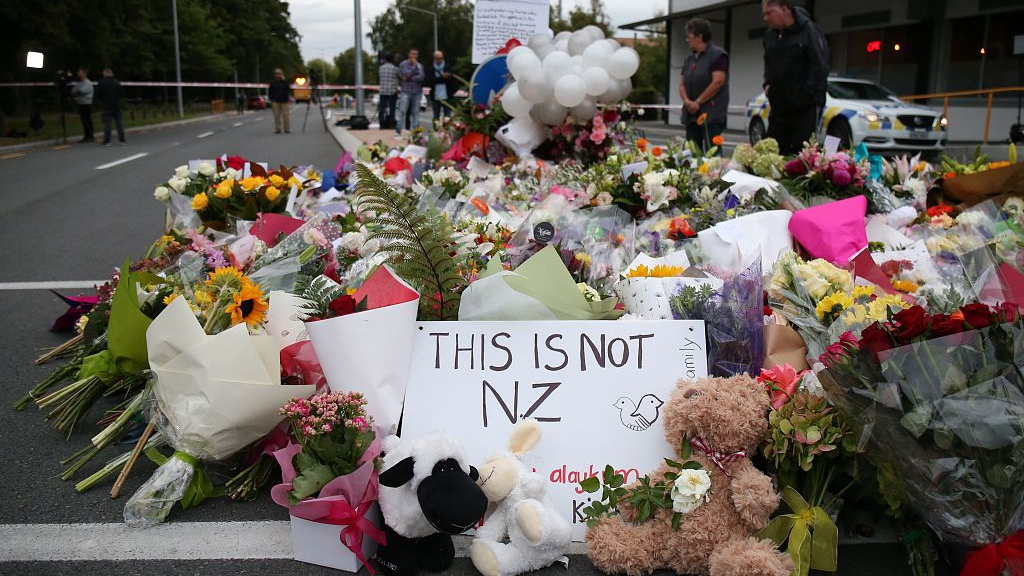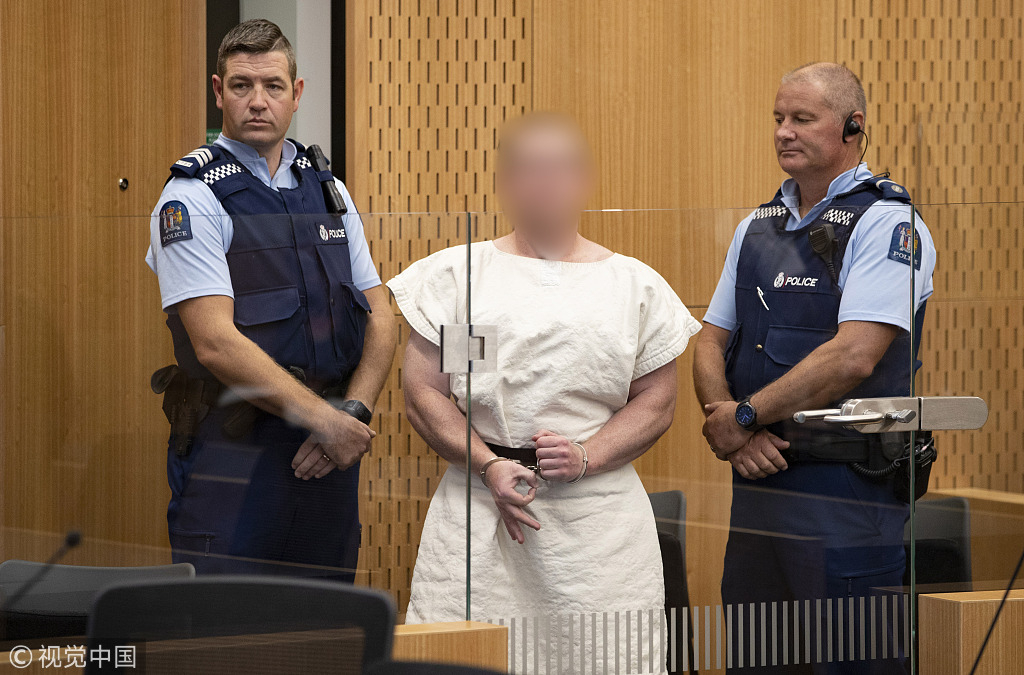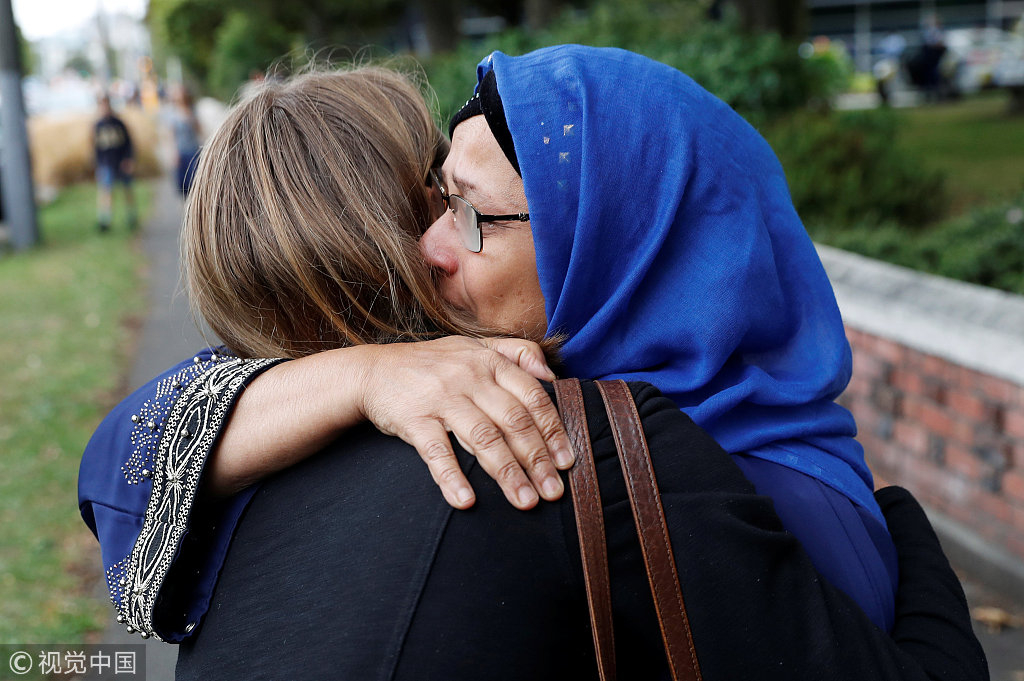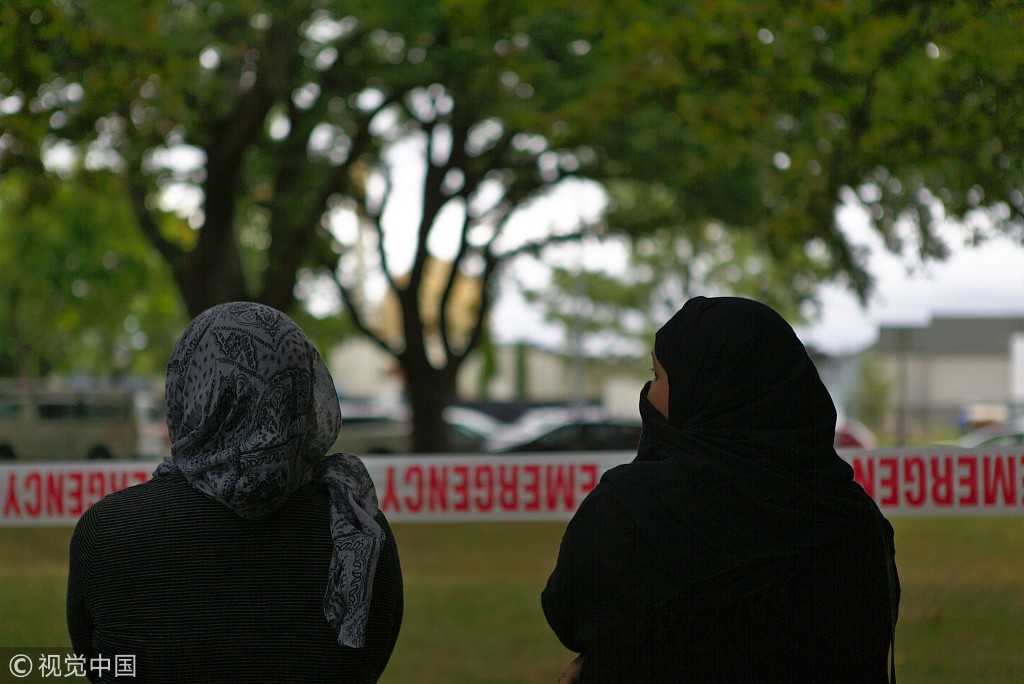
Analysis
11:57, 17-Mar-2019
Christchurch shootings: Terrorism in the age of social media
By Zhou Minxi

The world was shaken once again by news on Friday of mass shootings at two mosques in the New Zealand city of Christchurch. This time, 50 innocent people, including children, were killed.
The suspect, identified as 28-year-old Australian Brenton Tarrant, appeared to be motivated by racial and religious hatred, making him the latest in a string of mass murderers espousing white nationalist views.
Like the gunman in last year's Pittsburgh synagogue attack, Tarrant has been radicalized in a growing right-wing extremist culture online.

The man charged in relation to the Christchurch massacre, Brenton Tarrant, gestures in the Christchurch District Court, in Christchurch, New Zealand, March 16, 2019. /VCG Photo
The man charged in relation to the Christchurch massacre, Brenton Tarrant, gestures in the Christchurch District Court, in Christchurch, New Zealand, March 16, 2019. /VCG Photo
'Powered by algorithm'
The gruesome killing was live-streamed on Facebook.
Photos of firearms emblazoned with messages were posted to Twitter before they were used in the attack. And, on a chillingly lighthearted note, the gunman told his online viewers to subscribe to a controversial YouTuber, who has attracted criticism over alleged far-right views but boasts tens of millions of followers worldwide.
The Swedish social media influencer was quickly prompted to condemn this act of terrorism in a tweet, effectively informing all his 17 million Twitter followers about the massacre.
The mention was believed to make the deadly rampage go viral.
Facebook, Twitter and Google all reacted by taking down videos of the shooting and suspending the gunman's accounts following the carnage.
"Our hearts are broken over today's terrible tragedy in New Zealand. Please know we are working vigilantly to remove any violent footage," YouTube tweeted on Friday.

A woman embraces the relative of a victim after Friday's attacks at Masjid Al Noor in Christchurch, New Zealand, March 16, 2019. /VCG Photo
A woman embraces the relative of a victim after Friday's attacks at Masjid Al Noor in Christchurch, New Zealand, March 16, 2019. /VCG Photo
But it was too late. Disturbing footage and images, along with a 74-page manifesto detailing the killer's ideology, were already circulating in the dark corners of the Internet as other like-minded users cheered him on.
It was not the first time social media had been used to broadcast murder. In 2015, a gunman uploaded a video of him shooting dead two television journalists on air in the U.S. state of Virginia. Last year, the brutal killing of two European tourists was filmed and uploaded online by ISIL sympathizers in Morocco.
Social networking giants are facing a new round of scrutiny over their handling of violent content and extremist politics on their platforms. Facebook's Chief Product Officer Chris Cox reportedly quit amid criticism.
Live streaming has been a main growth driver for the tech industry. In 2016, Facebook CEO Mark Zuckerberg said the live video feature was created to "support whatever the most personal and emotional and raw and visceral ways people want to communicate are as time goes on."
"More than anything, social media has provided a platform for sharing extremist views," said Anwita Basu, an analyst at the Economist Intelligence Unit.
However, all three tech firms have recently been embroiled in accusations of crackdown on conservative user-generated content, as the platforms struggle to strike a balance between censoring hate speech and supporting freedom of expression.
In a 2018 paper, Professor Jessie Daniels at The City College of New York attributed the rise of white nationalist movement in the U.S. to both historical racism and "an emerging media ecosystem powered by algorithms."
"Today's 'Whitelash' is algorithmically amplified, sped up, and circulated to other White ethno-nationalist movements around the world, ignored all the while by a tech industry that 'doesn't see race' in the tools it creates," Daniels said.

Two women look at the Masjid Al Noor Mosque from Hagley park, in Christchurch, New Zealand, March 16, 2019. /VCG Photo
Two women look at the Masjid Al Noor Mosque from Hagley park, in Christchurch, New Zealand, March 16, 2019. /VCG Photo
People with fringe political beliefs are now able to connect with one another in a way that normalizes their worldview. There are numerous places on the Internet for people like the Christchurch killer to congregate, said Nolwenn Bervas, lead terrorism analyst at Risk Advisory Group.
In recent years, a pattern has emerged whereby mass murderers start on social media, where their extremist ideologies continue to be amplified in a digital loop that recruits newcomers with similar views.
"One of the Christchurch perpetrators posted his manifesto online before the attack where he wrote that he received/researched/developed his beliefs on the Internet, adding 'You will not find the truth anywhere else.' He cited people like Dylan Roof (who killed nine African Americans at a Charleston church in the U.S. state of South Carolina on June 17, 2015) or Anders Breivik (who killed eight people by detonating a van bomb in central Oslo's Regjeringskvartalet and then shot dead 69 participants of a Workers' Youth League summer camp on the island of Utøya on July 22, 2011) as inspirations, who also researched and developed their beliefs online," Bervas said.
"The amount of information and propaganda linked to the far-right, far-left or jihadism is extensive and accessible."
(Top image: Floral tributes are seen at a makeshift memorial for victims of the March 15 mosque attacks in Christchurch, March 16, 2019. /VCG Photo)

SITEMAP
Copyright © 2018 CGTN. Beijing ICP prepared NO.16065310-3
Copyright © 2018 CGTN. Beijing ICP prepared NO.16065310-3